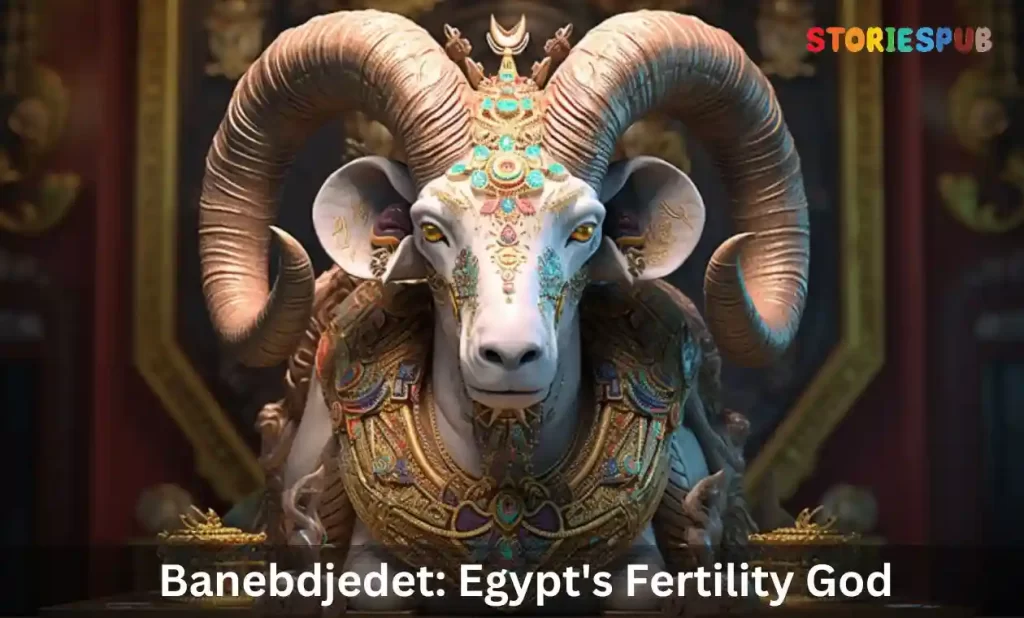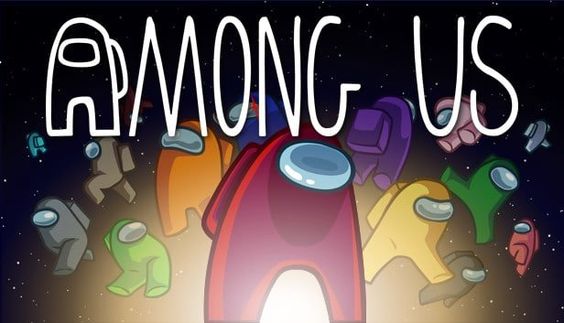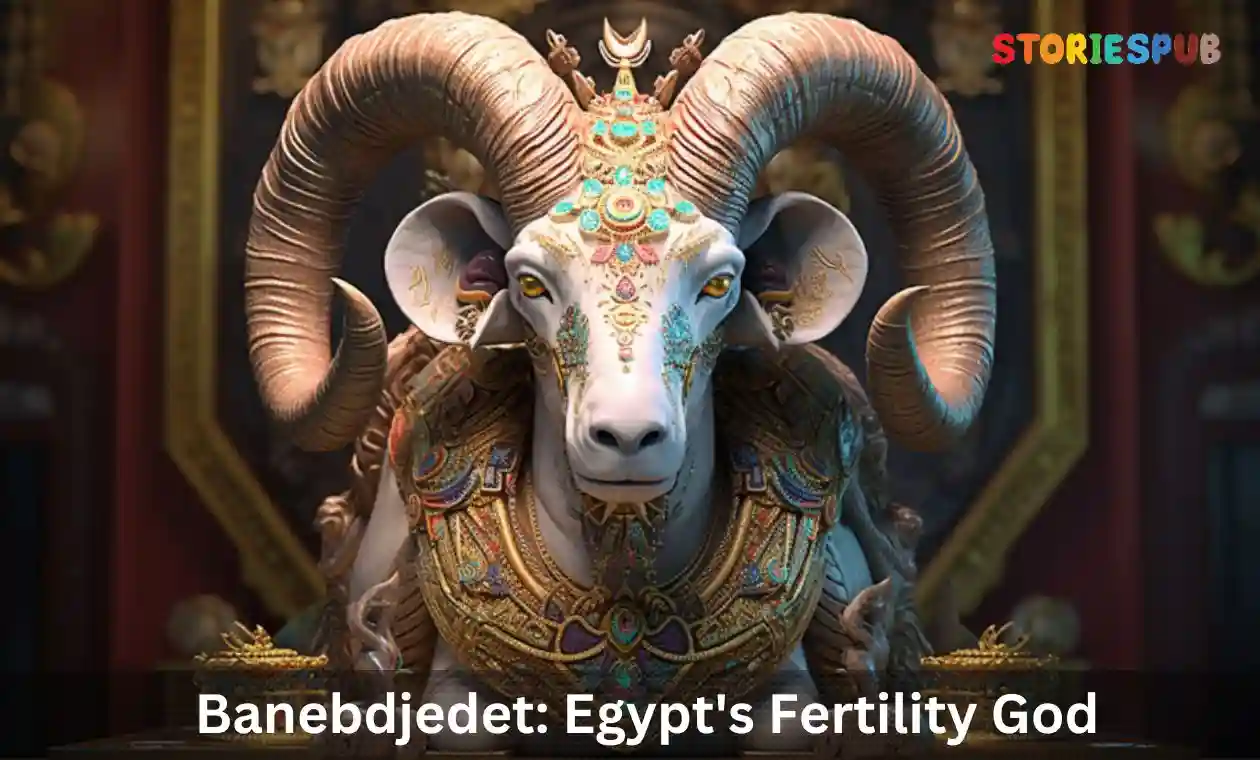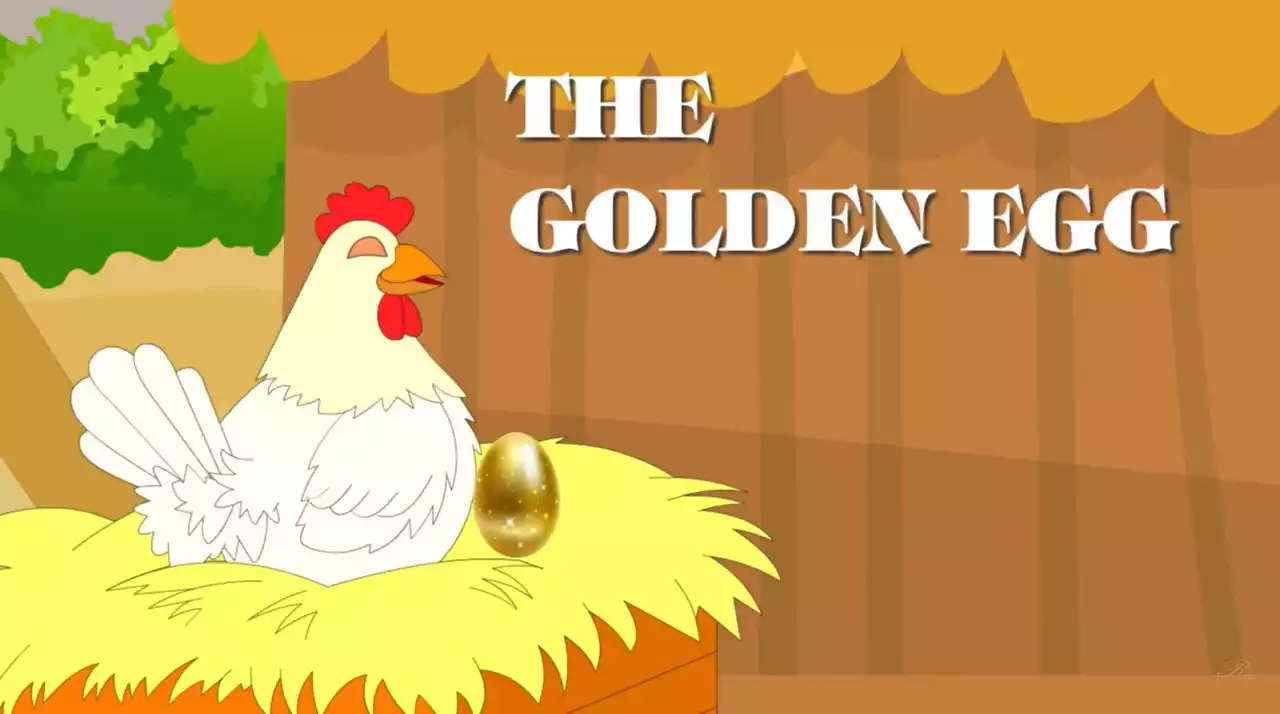Banebdjedet: Egypt’s God of Fertility & Agriculture

Egyptian Mythology: An Overview
Egyptian mythology is one of the most complex mythologies in human history. It is composed of various gods and goddesses, each with their unique characteristics, stories, and symbolism.
The ancient Egyptians believed that their gods controlled everything from the sun to the Nile river, which was essential for agriculture. Agriculture was crucial in ancient Egypt as it enabled people to sustain themselves and develop a prosperous civilization.
The Nile river provided water for irrigation, making it possible for crops to grow. As a result, agriculture became an integral part of Egyptian society and culture.
One of the most significant aspects of Egyptian mythology was their belief in life after death. They believed that life continued after death, and preparing for this life after death became a central aspect of their religion.
The Importance of Fertility and Agriculture in Ancient Egypt
Fertility was paramount in ancient Egypt because it enabled crops to grow, animals to reproduce, and humans to have children. Therefore, fertility became closely associated with various gods who were responsible for different aspects of fertility.
Agriculture played a crucial role in ancient Egyptian society as it enabled people to cultivate crops that could feed families and sustain an entire civilization. In addition, agriculture provided employment opportunities for thousands of people who worked as farmers or laborers on farms.
The Nile river was essential for agriculture as it provided water for irrigation during the dry season when rainfall was scarce. This allowed farmers to plant crops more than once per year resulting in higher yields.
Banebdjedet: The God of Fertility and Agriculture
Banebdjedet (also known as Banebdjed) was an ancient Egyptian god who represented both fertility and agriculture. He is depicted as a ram with four horns, which symbolizes his connection to fertility and agriculture.
Banebdjedet was also associated with Osiris, the god of death, and his cult center was located in Mendes in Lower Egypt. Banebdjedet’s name means “the ba of the lord of djedet.” Ba refers to the soul or spirit, while djedet is a place believed to be near Mendes.
The god was often referred to as “the soul of Osiris” because he played a significant role in the resurrection of Osiris. As a god of fertility, Banebdjedet was responsible for ensuring that crops grew and that animals reproduced.
As an agricultural deity, he provided farmers with knowledge on how to cultivate their land properly. Understanding Egyptian mythology helps us appreciate ancient cultures’ complexities and understand their beliefs and traditions.
Fertility and agriculture were essential aspects of ancient Egyptian society, which makes Banebdjedet an integral part of their mythology. In the following sections, we will dive deeper into Banebdjedet’s origins and symbolism and explore his worship rituals.
Origins and Symbolism of Banebdjedet
Mythical origins and family lineage
Banebdjedet is one of the oldest deities in ancient Egyptian religion, with his origins dating back to the Pre-dynastic period. He was believed to have been born in Mendes, a city in the Eastern Nile Delta region.
According to myth, Banebdjedet’s father was Osiris, the god of the afterlife and fertility, while his mother was Isis, the goddess of magic and fertility. Banebdjedet’s birth made him a member of one of Egypt’s most powerful families.
In some versions of mythology, Banebdjedet is also considered to be a form or aspect of Osiris himself. This association with Osiris gives Banebdjedet an important role in Egyptian funerary rites as well as agricultural activities.
Depiction in art and symbolism in ancient Egyptian culture
Banebdjedet was often depicted as a ram or goat with curled horns. In some depictions, he is shown wearing a crown that contains symbols associated with his importance to agriculture such as wheat and lotus flowers. The ram-headed form of Banebdjedet became so popular that it eventually became synonymous with Mendes itself.
One interesting aspect of Banebdjedet’s representation in art is that he is sometimes depicted with four rams’ heads instead of one. This symbolic depiction represents both fertility and stability – two concepts that are closely linked together for ancient Egyptians.
Another common symbol associated with Banebdjedet is ankh – the ancient Egyptian hieroglyphic symbol for “life”. Often times this was depicted on top on rams’ horns which indicated protection from dangerous forces such as drought or pests.
Role in the annual cycle of agricultural activities
As the god of fertility and agriculture, Banebdjedet was closely associated with the annual cycle of farming activities. In particular, he was believed to have control over the growth and health of wheat – one of ancient Egypt’s most important crops.
Banebdjedet played an essential role in crop fertility through his association with Osiris – a god who represented death and resurrection as well as agriculture. The cults of both gods were intermingled, focusing on bringing life to crops for the living as well as for the deceased.
In addition to wheat cultivation, Banebdjedet was also often linked with other agricultural pursuits including animal breeding and fishing – professions that were critical to ancient Egyptian society. Overall, Banebdjedet’s importance to ancient Egyptians cannot be overstated.
His origins are deeply rooted in myth and legend but his symbolism extends into every aspect of daily life for ordinary Egyptians. Whether through representations in art or through religious rituals honoring his power over fertility and agriculture – Banebdjedet remains a fixture of ancient Egyptian culture that continues to captivate modern audiences today.
Worship and Rituals Associated with Banebdjedet
Temples dedicated to Banebdjedet
Banebdjedet was a highly revered deity in ancient Egyptian culture, and as such, there were several temples dedicated to his worship. One such temple was located in the city of Mendes in the Nile Delta region.
This temple was considered the primary center of Banebdjedet’s worship, and it housed a number of important artifacts, including the god’s statue. The temple also had several areas where offerings could be made to the god.
These offerings often took the form of food and drink, but other items were also offered, such as clothing or jewelry. The offerings were meant to express gratitude for Banebdjedet’s role as a provider and protector.
Annual festivals celebrating the god’s power over fertility
Banebdjedet played a critical role in ensuring fertility in crops and animals, so it is not surprising that there were several annual festivals held in his honor. The most important festival was known as “The Festival of Osiris,” which took place during the month of Khoiak (October-November).
During this festival, people would gather at temples dedicated to Banebdjedet and participate in various rituals designed to honor the god’s power over fertility. Offerings would be made, including fruits and vegetables from that year’s harvest, which were considered sacred because they represented an abundant harvest thanks to Banebdjedet’s blessings.
Offerings made to honor the god’s role as a provider
Offerings were an essential part of worshiping Banebdjedet. People believed that by making offerings to him, they would receive blessings from him for their health, wealth, and prosperity.
These offerings included food, drink, clothing, and other valuable items. The offerings were often placed in special areas of the temples dedicated to Banebdjedet.
These areas were considered sacred and could only be entered by priests or other individuals deemed worthy by the temple authorities. People would make offerings to Banebdjedet throughout the year, not just during festivals or other religious events.
People believed that by making frequent offerings to Banebdjedet, they could ensure his continued blessings on their lives and those of their families. They also believed that by honoring him in this way, they would receive his protection against harm or misfortune.
The Role of Priests in Worshiping Banebdjedet
Priests played a critical role in worshiping Banebdjedet. They were responsible for overseeing the various rituals and ceremonies associated with the god’s worship. They also acted as intermediaries between people and the deity.
In addition to overseeing religious ceremonies and rituals, priests were responsible for maintaining the temples dedicated to Banebdjedet. This included ensuring that offerings were made regularly and that the temple was kept clean and free from damage.
Priests also performed divination rituals designed to reveal insights into people’s futures or provide guidance on important decisions. People believed that priests had a direct connection with Banebdjedet and could offer advice based on their divine insight.
Banebdjedet’s Legacy
Despite being an ancient deity whose worship ceased thousands of years ago, Banebdjedet’s legacy lives on today through his depictions in art, literature, and popular culture. His role as a symbol of fertility remains relevant today as people all over the world continue to rely on agriculture for sustenance.
In modern times, fertility is no longer solely associated with crops but encompasses human reproduction as well. Due to this, Banebdjedet’s relevance has extended to fertility treatments and medicine.
Banebdjedet was a highly revered deity in ancient Egyptian culture whose worship centered on his role as a provider of fertility and protection. The temples dedicated to his worship were essential centers of religious activity, and the annual festivals held in his honor were critical to ensuring fertility in crops and animals.
Priests played an essential role in overseeing the various rituals associated with Banebdjedet’s worship while also acting as intermediaries between people and the deity. Even today, Banebdjedet’s legacy remains relevant as his symbols continue to inspire new generations of people around the world.
Stories and Legends Involving Banebdjedet
The Story of Osiris, Isis, Horus, Set, and their Connection with Fertility
The story of Osiris, Isis, Horus, and Set is one of the most famous myths in ancient Egyptian mythology. It is a tale of power, struggle, love, and fertility. The myth tells the story of how Osiris became the god of the underworld after being killed by his jealous brother Set.
However, he was resurrected by his wife Isis through her magical powers. Osiris’ death and resurrection symbolize the cycle of life and death that was so important to ancient Egyptians.
The myth also has strong connections to fertility since Osiris is associated with agriculture and growth. Isis gave birth to Horus after Osiris’ resurrection.
The young god was seen as a symbol of hope for Egypt’s future prosperity. His role as a protector of fertility made him an important deity in Egyptian culture.
The Mythological Battle between Horus and Set for Control over Egypt
The battle between Horus and Set is another well-known story in Egyptian mythology. It tells how the two gods fought for control over Egypt after Osiris’ death. Horus was seen as the rightful heir to Osiris’ throne while Set believed he should be king instead.
The conflict between them leads to a fierce battle that lasts for many years. In many versions of the myth, it is Banebdjedet who plays a crucial role in helping Horus defeat Set.
He provides magical assistance to Horus during their final confrontation which ultimately results in Horus becoming king. This story highlights Banebdjedet’s importance as a protector deity who helped ensure fertility and prosperity for Egypt during times of conflict.
Banebdjedet’s Role in Protecting Osiris’ Body After His Death
After Set killed Osiris, he scattered his body parts all over Egypt. Isis and her sister Nephthys went on a quest to find and reassemble the body of their beloved Osiris. They were eventually successful, but they needed protection to ensure that the body would not be harmed again.
That’s where Banebdjedet comes in. He was tasked with guarding Osiris’ body after it was reassembled.
This allowed for a proper burial which ensured that Osiris’ soul could enter the afterlife. The story of Banebdjedet’s role in protecting Osiris’ body is another example of his importance as a deity who ensured fertility, prosperity, and order in ancient Egyptian society.
Conclusion: The Importance of Banebdjedet in Ancient Egyptian Culture
In ancient Egyptian culture, agriculture and fertility were vital components of daily life. Banebdjedet was an important god who played a significant role in ensuring that these needs were met. Through his connection to fertility, agriculture, protection, and magical powers, he helped maintain balance and order in society.
His story is just one example of how mythology shaped ancient Egyptians beliefs about the world around them. Today, we can still look back at these stories with wonder and appreciation for the rich history and culture that they represent.
Conclusion
Banebdjedet was a god of great importance in ancient Egyptian culture. As the god of fertility and agriculture, he played a vital role in the cycle of life, death, and rebirth that characterized Egyptian beliefs about the natural world. His depiction in art and symbolism reflected his power to provide for the people of Egypt and ensure their prosperity.
The worship and rituals associated with Banebdjedet were an integral part of Egyptian society. Temples dedicated to the god served as centers for agricultural activities, while annual festivals celebrated his power over fertility.
Offerings were made to honor his role as a provider, ensuring that crops would grow and families would thrive. The stories and legends involving Banebdjedet provide a rich tapestry of mythological symbolism that reflects ancient Egyptian beliefs about life, death, and rebirth.
The story of Osiris, Isis, Horus, Set, and their connection with fertility speaks to the cyclical nature of life itself. The mythological battle between Horus and Set for control over Egypt demonstrates the eternal struggle between order and chaos that governs all things.
And Banebdjedet’s role in protecting Osiris’ body after his death shows how even in death there is hope for new life. Banebdjedet was one of the most important gods in ancient Egyptian culture.
His significance as a provider ensured that crops would grow and families would prosper. His depiction in art reflected this power over fertility while also showcasing his importance to everyday life in Egypt.
From temples dedicated to him to festivals celebrating his power over agriculture, Banebdjedet was truly an indispensable god whose influence can still be felt today. While much has changed since ancient times, we can still learn from Banebdjedet’s role in Egyptian mythology.
He reminds us of the importance of the natural world and our connection to it. By studying his stories and rituals, we can gain a deeper understanding of our place in the universe and how we can work together to ensure a sustainable future for all people.
Hey kids, how much did you like Banebdjedet: Egypt’s God of Fertility & Agriculture ? Please share your view in the comment box. Also, please share this story with your friends on social media so they can also enjoy it, and for more such Egyptian Mythology, please bookmark storiespub.com.
Related Post :
Banebdjedet FAQ
What was Banebdjedet's primary role in ancient Egyptian mythology?
Banebdjedet's primary role was as a protector and provider of the agricultural fields. He was believed to bless the fields and ensure a bountiful harvest, as well as renew the fertility of the land.
How is Banebdjedet related to other Egyptian deities?
Banebdjedet is sometimes associated with other deities of fertility, such as Osiris and Min. He is also connected to the god Ptah, as the two share similar attributes and roles in the renewal of the land.
What are the primary symbols associated with Banebdjedet?
Banebdjedet is often depicted as a ram or a man with the head of a ram, symbolizing his connection to fertility and agriculture. He is also associated with the shepherd's crook, representing his role as a protector and provider of the land.
How was Banebdjedet worshiped in ancient Egypt?
Banebdjedet was worshiped through prayers, offerings, and rituals intended to appease him and ensure a bountiful harvest. He was often invoked during the planting and harvesting seasons, as well as during festivals celebrating the renewal of the land.
Are there any temples dedicated to Banebdjedet in ancient Egypt?
Yes, there were temples dedicated to Banebdjedet in Mendes, his primary cult center. These temples were associated with fertility, agriculture, and the protection of the land.
Were there any specific rituals or festivals associated with Banebdjedet?
Yes, there were several festivals associated with Banebdjedet, including the "Festival of the Beautiful Reunion" and the "Feast of Banebdjedet." These festivals were dedicated to the renewal of the land and the blessings of the harvest.
Q: What is the symbolism behind Banebdjedet's depiction as a ram or a man with a ram's head?
The ram symbolizes Banebdjedet's connection to fertility, virility, and strength, as well as his role as a protector and provider of the land. As a shepherd's animal, the ram also represents his role as a guide and protector of the people.
How did the worship of Banebdjedet change over time?
As Egyptian society evolved and agricultural practices changed, the worship of Banebdjedet became less central. However, he continued to be invoked for protection and guidance, particularly in relation to the fertility of the land.
Can I still find representations of Banebdjedet in modern times?
yes, representations of Banebdjedet can still be found in museums, art collections, and books about ancient Egypt. His image also appears in popular culture, particularly in media related to ancient Egyptian mythology and history.
























